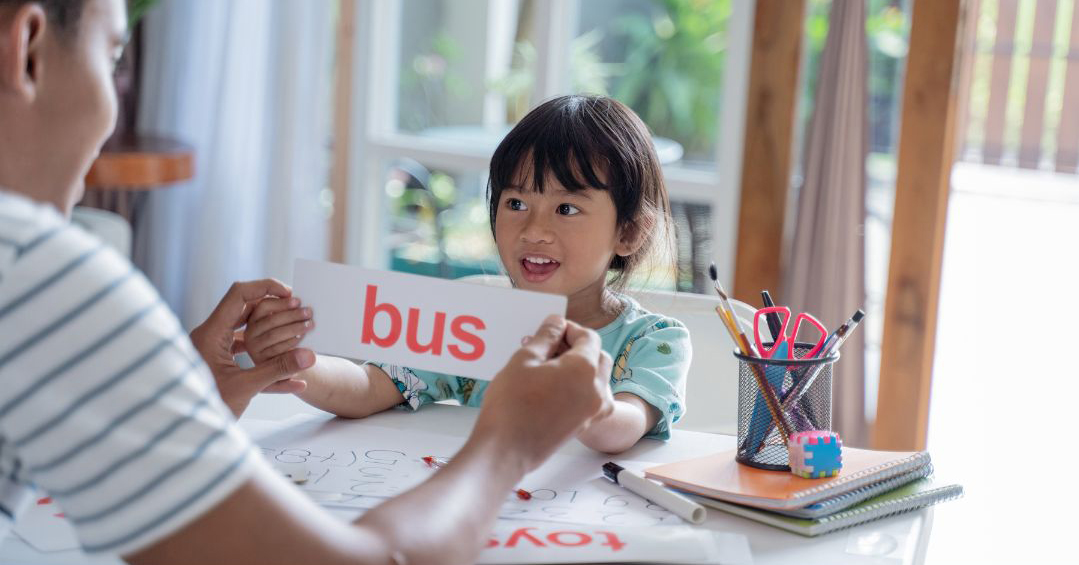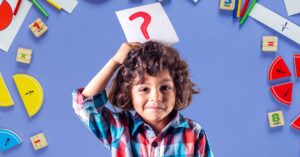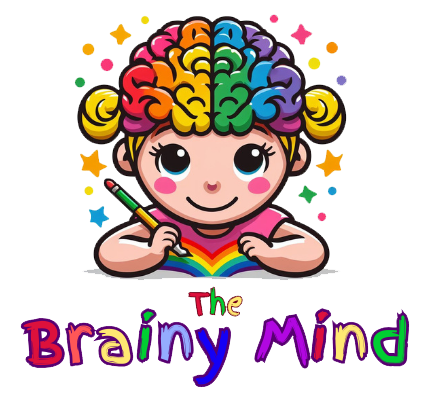My Journey With Flashcards
A flashcard skeptic. That is what I was. But as a curious parent, I was keen on exploring new methods and giving them a try. I vividly remember the first time I introduced flashcards to my kid — wondering if these small cards would overburden the tiny brain of my 9-month-old.
It was a moment of hesitation before I finally took the plunge.
When my child reached the age of 3 months, the paediatrician recommended introducing picture books into our routine, just to soothe, particularly before bedtime.
However, it wasn’t until she turned six months old that she started associating books with sleep. It was a realization that struck me—I wanted to find something that would spark her interest in learning.
With this idea, I slid on an extensive research journey, exploring books and blogs dedicated to early childhood education and flashcards.
As I delved deeper into the world of flashcards, I discovered that the concept had a rich history. It was fascinating to learn that the pioneers of early childhood education, Glenn Doman and Makoto Shichida, were the first to recognize the benefits of using flashcards in learning.
Their research showed that these simple cards had the remarkable ability to tap into a child’s innate potential and help it flourish.
It was a bit confusing at first, but I gradually grasped the concepts and techniques. I began using a variety of flashcards, each serving a different purpose in my child’s learning journey.
Dot Cards for Math
Among the various types of flashcards I used, one that stood out as particularly compelling was the dot cards for math. These cards were simple yet powerful.
Each card displayed a specific number of dots, representing a quantity. By showing these cards to my child and encouraging them to count the dots, I was playfully introducing basic mathematical concepts.
To my delight, by the time my child reached a year and two months, I could see their growing understanding of the connection between the number of dots and the corresponding numeral.
- Dot cards are designed with colorful dots arranged in various patterns. These eye-catching visuals capture children’s attention and make learning math enjoyable.
- Dot cards help children understand the concept of quantity and develop their counting skills. By associating the dots with numbers, children learn to recognize numbers and comprehend their value.
- As children progress, dot cards can be used to introduce basic arithmetic operations, such as addition and subtraction. The patterns on the cards provide a visual representation of these mathematical processes.
In my upcoming blogs, I will delve into the details of each method and share the processes I followed. Stay tuned for more insights and practical tips on utilizing flashcards and other educational tools for children.
Number Cards
Number cards proved to be a valuable resource, featuring numerals and their corresponding quantities in a visual format. They made counting a fun activity
- Number cards display numerals in an easy-to-read format. Children can practice recognizing numbers and understanding their order.
- Each number card represents a specific quantity, making it a perfect tool for counting practice. Children can associate the numeral with the corresponding amount, reinforcing their number sense.
- Number cards can also be used to introduce simple math operations. By combining and manipulating the cards, children can explore addition, subtraction, and even basic multiplication.
Alphabet Cards
Alphabet cards played a vital role in language development, showcasing each letter of the alphabet alongside a corresponding image.
Going through these cards together, my child eagerly absorbed the letter sounds and associated them with the visual representations.
- Alphabet cards feature each letter of the alphabet, accompanied by appealing illustrations. Children can learn to identify and differentiate letters, laying the foundation for reading and writing.
- Each alphabet card is associated with a word or object that starts with the corresponding letter. This helps children understand the sounds letters make, building their phonics skills.
- By exploring alphabet cards, children are exposed to a range of words and concepts. This exposure enhances their vocabulary and enables them to communicate more effectively.
Picture Flashcards and Word Cards
Picture flashcards were a hit as well, featuring a variety of objects, animals, and scenes. They provided abundant opportunities for vocabulary building and language enrichment.
Word cards took the learning experience a step further by introducing my child to basic words, encompassing everyday objects, simple verbs, and adjectives. It was inspiring to see my child recognize these words independently.
- Picture flashcards feature vibrant images that represent various objects, animals, or concepts. They help children associate words with their corresponding visuals, enhancing comprehension and memory.
- Word cards focus on specific vocabulary words, presenting them alongside simple definitions or sentences. This aids children in expanding their vocabulary and developing language skills.
Mandala Cards
In addition to traditional flashcards, I incorporated mandala cards into our learning routine. These intricate designs allowed my child to explore colors, shapes, and patterns.
- Mandala cards showcase intricate and symmetrical designs that children can color or trace. Engaging with mandala cards allows children to express their creativity and explore different artistic techniques.
- Coloring mandala cards promotes a sense of calmness and focus. This activity can be used as a mindful exercise to help children relax and develop concentration skills.
Memory Games
To keep the learning journey engaging and exciting, I introduced memory games.
- Memory games involve matching pairs of cards, encouraging children to remember the locations of different images. This enhances their memory and concentration abilities.
- By engaging in memory games, children practice critical thinking, problem-solving, and visual recognition. These cognitive skills are essential for academic success.
Developing Clairvoyance and Telepathy
Additionally, I delved into exercises like clairvoyance and telepathy that stimulated intuitive thinking and deeper connections between parent and child, such as asking my child to guess the content of a hidden card or communicate their thoughts and preferences without speaking.
While I believe these developed a strong bond between us, I can’t point to any research on the back of my palm. So, tread on this path after carrying out your research.
- Engaging in imaginative play involving clairvoyance and telepathy fosters creativity and inventive thinking. Children can explore different scenarios, enhancing their storytelling skills.
- Playing games related to clairvoyance and telepathy encourages social interaction and cooperation with others. It promotes teamwork, communication, and empathy.
Eye Exercises for Children
To complement the flashcard sessions, I also incorporated eye exercises into our routine, aiming to strengthen my child’s visual perception and coordination.
Simple activities like tracking objects, focusing on distant and nearby targets, and engaging in eye-hand coordination games helped develop their visual skills and enhance their overall learning experience.
- Eye exercises help children develop eye muscles and improve coordination. These exercises involve focusing on specific objects, following patterns, or tracking movements.
- By engaging in eye exercises, children enhance their visual acuity and depth perception. This can have a positive impact on their reading abilities and overall visual development.
Flashcards for Early Childhood Education
But flashcards, as we know them today, didn’t originate in recent times. In fact, they trace their roots back to the early 19th century and the innovative mind of Johann Heinrich Pestalozzi, a German educator.
Pestalozzi strongly believed in the power of hands-on learning, and he devised a set of wooden cards with numbers and letters to aid children in reading and arithmetic.
Since Pestalozzi’s time, flashcards have undergone remarkable transformations and have become a unique educational tool around the globe.
The modern-day version we use now typically consists of a question or prompt on one side and the corresponding answer on the other. These cards have the incredible ability to engage children’s minds and facilitate active learning.
As I incorporated flashcards into our daily routine, I witnessed first-hand the magic they held. The vibrant colors and captivating images on the cards instantly captured my child’s attention.
What impressed me most about flashcards was their versatility. I could use them to teach various subjects, from numbers and letters to shapes, colors, and even foreign vocabulary.
Each card became a gateway to a new world of learning, stimulating my children’s imagination and nurturing their thirst for knowledge.
Another aspect that made flashcards so effective was their portability. We could take them anywhere, turning a mundane car ride or waiting time into an opportunity for interactive learning.
It was incredibly convenient to have a compact tool that could transform any moment into a valuable educational experience.
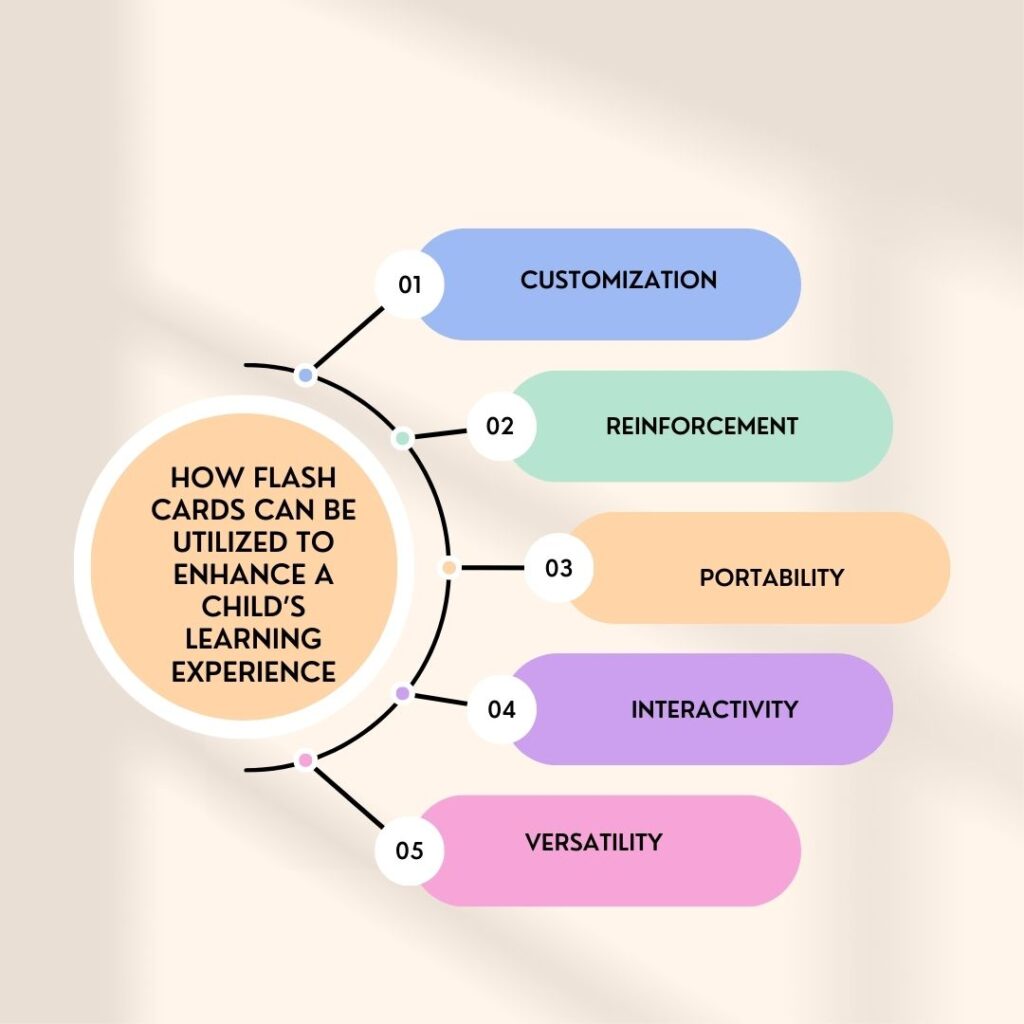
What exactly are Flashcards for Kids?
Kids’ flashcards are like supercharged learning tools, specially designed to help children easily grasp and remember information. These clever cards are packed with images, concepts, ideas, and words that are kid-friendly and make learning a breeze.
They work wonders for improving attention span by allowing children to recall information from the pictures quickly. It’s a simple yet effective way to help kids absorb new knowledge and keep it locked in their brains.
With flashcards, children can explore, learn, and become masters of various subjects, igniting a lifelong love for learning.
Among the different types of flashcards, speed flashcards take reading skills to the next level. These nifty cards gradually boost reading speed, expand vocabulary, and open up a world of exciting concepts.
Not only that, but they also give cognitive abilities, attention, focus, and concentration a fantastic boost.
Learning becomes a fun and interactive adventure with these handy cards, and the best part is they can be taken anywhere, making learning a portable and user-friendly experience beyond the classroom.
When it comes to speed flashcards, they’re shown lightning-fast to kids, as quick as 0.5 seconds per card. The aim is to activate the right side of their young, developing brains, which is said to be most active between the ages of 0 and 3, making these little ones’ right-brain dominators.
At this age, children have this incredible power to absorb images in a snap. Their right brain is all about creativity, photography, long-term memory, and imagination.
As they grow, around the age of 4, words and logic start to take the stage as the left brain joins the party.
Here’s a fascinating fact: researchers at MIT conducted a mind-blowing study (you can check it out at this link: https://news.mit.edu/2014/in-the-blink-of-an-eye-0116) and found out that the human brain can actually process images in an astonishingly quick time of just 13 milliseconds! Can you believe it? This showcases the unbelievable capabilities of a child’s brain and what incredible feats it can achieve.
Unlocking the Advantages of Flashcards
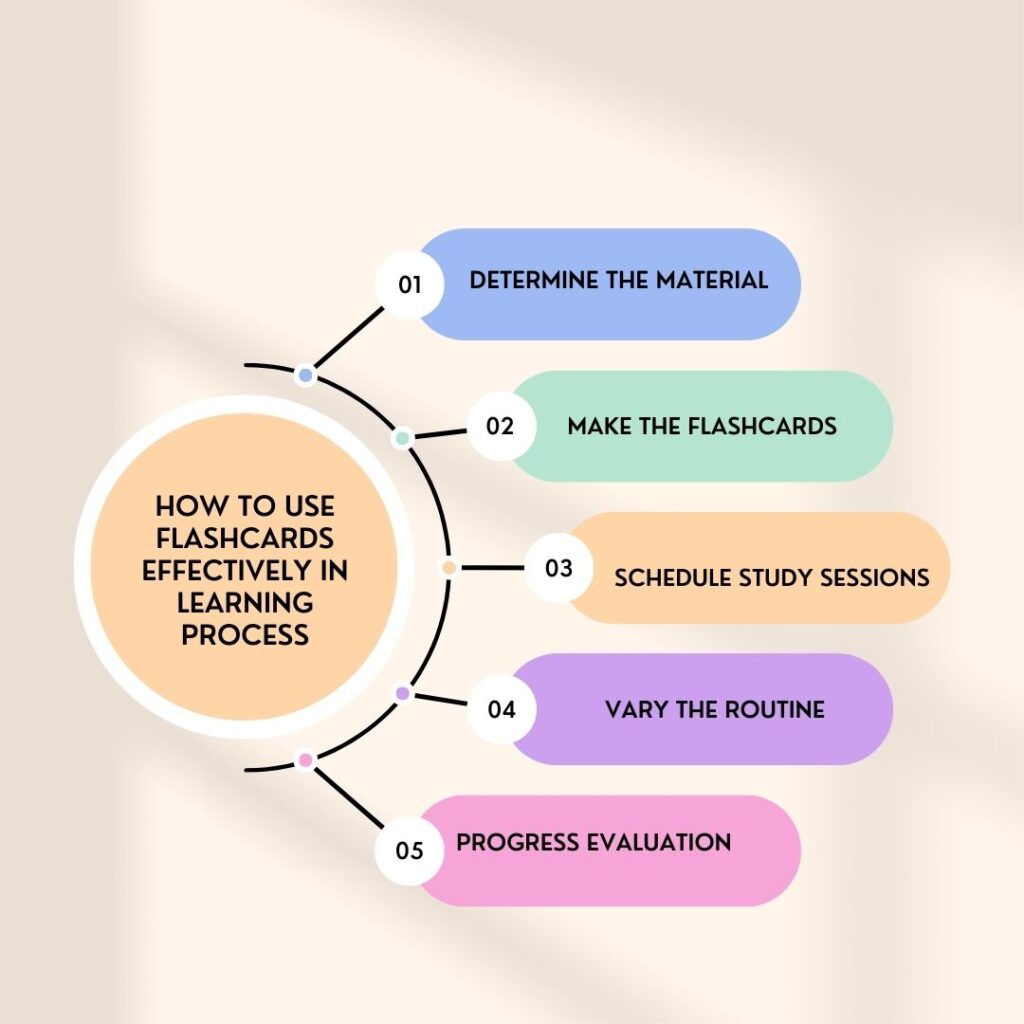
Enhancing Memory with Flashcards: Active Recall
When considering the question side of a flashcard and recalling the answer, one activates a mental process called active recall.
It involves trying to remember the concept from scratch rather than passively reading the textbook or relying on multiple-choice quizzes. Active recall strengthens neural connections, and flashcards facilitate repetitive recall, making them an effective tool for enhancing memory.
Studies indicate that active recall leads to 150% better retention compared to passive studying. Flashcards prompt the retrieval of information from memory, resulting in quicker memory formation and improved test performance.
Metacognition
Revealing the answer side of a flashcard prompts an act of self-reflection known as metacognition. It involves evaluating one’s response by comparing it to the correct answer and assessing the level of familiarity or understanding.
Metacognitive strategies consistently deepen knowledge, improve learning outcomes, and enable students to identify areas of weakness. They also aid in planning effective study strategies and accurately assessing the extent of understanding.
Confidence-Based Repetition
Flashcards, being independent of books or documents, allow for sorting them based on the need for further review. Concepts requiring more attention can be studied more frequently, while those already well-understood can be revisited occasionally for reinforcement.
This confidence-based repetition, derived from spaced repetition techniques, has been scientifically proven over decades of research to optimize memory performance. It targets areas of lower confidence and facilitates efficient revision.
Improving reading speed with flashcards
Flashcards are a powerful tool for improving reading speed and accuracy. By regularly using these cards, children can keep up with their peers in school and excel in their studies. Consistent practice with flashcards gradually enhances reading speed and fluency.
Improved Comprehension
Flashcards not only boost reading speed but also foster better comprehension.
The carefully crafted prompts on the cards challenge children to delve deeper into the text while the questions on the back reinforce their understanding. This approach helps children develop a stronger grasp of the material.
Expanded Vocabulary
Flashcards cover a wide range of topics, offering children the opportunity to learn new words and concepts. Through their use, children can enrich their vocabulary, broaden their knowledge, and gain a deeper understanding of the world around them.
Studies have shown that flashcards are effective in helping children acquire and retain new words.
Sharper Focus and Concentration
Engaging with flashcards requires children to concentrate and pay close attention as they read quickly and accurately. This process sharpens their focus and enhances their ability to sustain attention on a task. The result is an improved attention span and increased concentration skills.
Interactive and Enjoyable Learning
Learning with flashcards is a delightful experience for children. The colorful and interactive nature of the cards captures their imagination and makes the learning process enjoyable.
Children can work through the cards at their own pace, experiencing the satisfaction of tracking their progress and witnessing their skills develop.
Flashcard Learning for Cognitive Development
Flashcard learning stimulates a child’s cognitive and critical thinking skills, fostering quick information recall from visual stimuli. This approach engages both hemispheres of the brain, providing a fun and engaging way to process information while boosting overall learning potential.
Develops Photographic Memory
Flashcard learning trains children’s ability to recall details swiftly from pictures, known as photographic memory.
By triggering visual stimuli, flashcards expand a child’s brain capacity and enable them to retain information with remarkable precision. This skill is beneficial for educational and non-educational purposes.
Language Development with Flashcards
Flashcards not only enhance a child’s knowledge base but also create interactive learning sessions. Consistent exposure to the same information helps children become familiar with the content.
Flashcards can even be used to teach a new language, making the learning experience enjoyable and positively influencing social and conversational abilities.
Visual Engagement and Flashcard Learning
Flashcards stimulate a child’s visual senses, encouraging deep thinking and effortless information recall. Even after a significant amount of time has passed, children can answer questions based on the flashcards.
Flashcard learning captivates and stimulates their minds, fostering curiosity and promoting effective learning.
Boosting Self-Confidence through Flashcards
As children acquire knowledge, it is essential to reward their efforts and build their self-confidence. Flashcard learning empowers children to quickly adapt to new information, motivating them to stay focused and strengthen their mental abilities.
Parents play a crucial role in making flashcard sessions short, enjoyable, and interactive, fostering their child’s interest and engagement.
When Should Kids Start Using Flashcards?
Here comes the tricky part. While some sources suggest that flashcards can be introduced to your child as early as six months old, others advise against using them with infants of such a young age. I initiated my kid at 9 months.
Around the age of one, children often display curiosity, making it a potentially enjoyable way for parents to introduce them to various concepts.
Let’s keep it simple: as soon as your child starts showing signs of curiosity, it might be an appropriate time to start using flashcards. As your child continues to grow and develop, you can gradually incorporate flashcards featuring numbers, phonics, and pictures into their routine.
However, a contrasting report can be found in this article (https://www.washingtonpost.com/national/health-science/teaching-babies-to-read-is-it-possible-several-companies-say-yes-but-study-says-no/2014/05/05/ead52d82-b5d6-11e3-b899-20667de76985_story.html), which highlights the ambiguity surrounding a baby’s true capacity to learn how to read.
Furthermore, it’s essential to remember that every child develops at their own pace, and what may work for one child may not work for another.
Seeking guidance from a paediatrician or early childhood development specialist can provide personalized advice and recommendations based on your child’s individual needs and stage of development.
What to Do and Not To Do
Steady pace: Flash the cards at a consistent speed of 2 per second. This rhythmic pace allows your child enough time to absorb the information on each card without feeling overwhelmed.
Keep it fresh: Avoid repeating the same flashcards over and over again. Introducing variety and new cards helps keep your child interested and engaged in the learning process.
Be Regular and Consistent: Establish a routine for flashcard sessions. Consistency is key to reinforcing learning. Set aside a specific time each day or week to engage with flashcards, creating a predictable learning environment for your child.
When to stop: It’s crucial to be mindful of your child’s mood and physical needs. If your child is unwell, tired, or hungry, it’s best to postpone the flashcard session. A receptive and engaged mindset is essential for effective learning.
Make it Enjoyable: The key to a successful flashcard session is creating an enjoyable and engaging experience for both you and your child. Infuse enthusiasm and energy while presenting the cards. Use animated voices, gestures, and facial expressions to captivate your child’s attention and generate excitement for the learning process.
Avoid Testing Your Child: Flashcards are not meant to be a testing or judgmental tool. Avoid putting pressure on your child to perform or recall information from the cards. Instead, focus on introducing knowledge and fostering a positive learning experience. Keep your expectations low and allow your child to explore and absorb information at their own pace.
Follow their interests: Choose flashcard subjects that align with your child’s interests. When the topics resonate with their curiosity, they are more likely to actively participate and remember the information.
Update regularly: Keep the flashcard content fresh by regularly introducing new information and visuals. This prevents boredom and encourages continued exploration and learning.
Positive vibes: Create a positive and enthusiastic atmosphere during flashcard activities. When your child feels motivated and supported, they are more likely to engage actively and make meaningful connections with the flashcards.
Mind their well-being: Consider your child’s well-being before starting flashcard sessions. If they are tired, unwell, or stressed, it’s best to wait for a more alert and receptive moment to ensure productive learning.
Break it up: Take breaks between flashcard sessions to prevent mental fatigue and maintain your child’s interest and attention. Use these breaks for fun activities or turn the learning into a game to make it more enjoyable.
Right size and appeal: Use appropriately sized flashcards that your child can clearly see. Opt for visually appealing designs and interactive elements that capture their interest and keep them engaged.
How Many Flashcards Should You Use?
Determining the appropriate number of flashcards to use can contribute to an effective learning experience for your child. Here are some insights to consider:
Average Flashcards per Year: The Optimal Number of Flashcards: It is recommended to introduce your child to a range of 400 to 650 flashcards annually for a well-rounded and sustainable learning experience. However, the count can be further increased to 1,000 flashcards, contingent upon the child’s curiosity and eagerness to learn.
Flashcard Set Size: When creating flashcard sets, it is advisable to have around 12-15 cards in each set. This number strikes a good balance between providing enough content for learning and avoiding overwhelming the child with too many cards at once.
Frequency of Flashcard Sessions: To maximize learning, aim to incorporate flashcards into your child’s daily routine. It is beneficial to present three sets of flashcards per day. This regular practice helps reinforce the learned information and keeps the learning process consistent.
Repetition within Sets: Encourage your child to go through each set of flashcards multiple times during a session. Repeating each set three times can significantly enhance memory retention and reinforce the knowledge being acquired.
Duration of Flashcard Sessions: During each session, allocate an appropriate amount of time for your child to engage with the flashcards. Aim for a duration of around 15-20 seconds for each set. This timeframe allows for focused attention without causing fatigue or loss of interest.
Research Sources
Dunlosky J., Rawson K. A., Marsh E. J., Nathan M., Willingham D. T. (2013) Improving students’ learning with effective learning techniques: Promising directions from cognitive and educational psychology. Psychological Science in the Public Interest 14(1): 4–58. https://pubmed.ncbi.nlm.nih.gov/26173288/
Gurung, R. A. R., & McCann, L. (2012). Study techniques and teaching. In B. M. Schwartz, & R. A. R. Gurung (Eds.), Evidence-based teaching in higher education (pp. 96–116). Washington, DC: American Psychological Association. https://psycnet.apa.org/record/2011-29047-006
Appleby, D. C. (2013). A flashcard strategy to help students prepare for three types of multiple-choice questions commonly found on introductory psychology tests. Society for the Teaching of Psychology’s Office of Teaching Resources. Retrieved from http://www.teachpsych.org/Resources/Documents/otrp/resources/appleby13flashcard.pdf
Dykes, B. (2009, October). Repeat after me: The link between repetition and memory. Teacher: The National Education Magazine, 12.
Harisanty, Dessy & Srirahayu, Dyah & Kusumaningtiyas, Tiara & Anugrah, Esti & Permata, Islahun & Anggraeni, Dian. (2020). The Utilization of Flashcards in Children Information Literacy Development.https://www.researchgate.net/publication/346107913_The_Utilization_of_Flashcards_in_Children_Information_Literacy_Development
Karpicke, J. D. & Roediger, H. L. (2008). The critical importance of retrieval for learning. Science, 319(5865), 966-968. doi: 10.1126/science.1152408
Oren, S., Willerton, C., & Small, J. (2014). Effects of spaced retrieval training on semantic memory in Alzheimer’s disease: A systematic review. Journal of Speech, Language, and Hearing Research, 57(1), 247-270. https://doi.org/10.1044/1092-4388(2013/12-0352)
Smolen, P., Zhang, Y., & Byrne, J. H. (2016). The right time to learn: Mechanisms and optimization of spaced learning. Nature Reviews Neuroscience, 17(2), 77. https://doi.org/10.1038/nrn.2015.18

